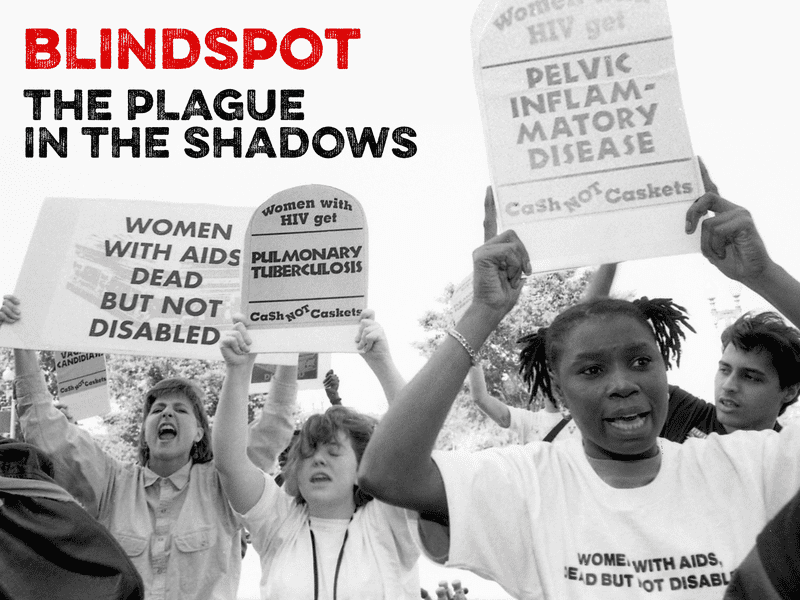KAI WRIGHT: In the late 1970s and ’80s … New York City could be a dangerous place.
Valerie Reyes-Jiménez: People just started, like, disappearing. Like, one day they were there, and the next day they were gone. Like, where did they go?
[BBC archival clip]: New York, plagued by violence, drugs and poverty.
KAI WRIGHT: These were problems manufactured by neglect.
Joyce Rivera: You know, it's not just that it was negligent, it was willful negligence.
KAI WRIGHT: And they gave cover to a new and deadly virus: HIV.
Valerie Reyes-Jiménez: We said that people had the monster because they had that look. They had the sucked in cheeks. They were really thin.
KAI WRIGHT: Misinformation and disinformation about HIV and AIDS was common.
Shirlene Cooper: They said it was only gay men that could get it. So I said, "Well, I'm not a gay man, so how would I get it? And I'm an African American woman, so I wouldn't have it. So how did my baby die?"
KAI WRIGHT: I’m Kai Wright, host of Blindspot: The Plague in the Shadows.
In this series, we will meet people who saw what was happening around them — in their neighborhoods and in their communities — and decided they needed to do something. Even though many of them were just straight out afraid.
Eugene Ruppert: Go back to the early '80s, mid-'80s, AIDS hits New York City like a pandemic. People are scared. They don't know how it transmits, how you can get it. Everybody says it's body fluids and it's this, and it's that, and people didn't know.
KAI WRIGHT: Despite this fear and stigma, people stepped up — people like doctors on the pediatric ward at Harlem Hospital.
Margaret Heagarty: They would come into the hospital, be admitted to my ICU and die.
Lizzy Ratner: And roughly how many kids would you say there were from year to year?
Steven Nicholas: Well, you know, it started as one, then it was two, then it was four, then it was, so, you know, this sort of progression. I would say that by the end of the first year we were, we had dozens. And before long we had, we had, you know, couple hundred.
Margaret Heagarty: And what are you going to do with this? When you get all done and reach heaven and Peter says, "What did you do with AIDS," what is it you’re going to do with it? Or what do you hope will happen from it?
Kai Wright: Um.
Margaret Heagarty: I want to make sure you are not exploiting.
KAI WRIGHT: Our understanding of the history of HIV and AIDS, and who has been affected by it, is incomplete. We have overlooked or forgotten too many of the stories — and lessons — that the people who first confronted this epidemic tried to teach us.
Maxine Wolfe: We literally had to convince the federal government that there were women getting HIV.
Katrina Haslip [from her memorial tape]: I represent the excluded and underrepresented groups of women, minorities, and HIV positive individuals, and also prisoners.
Joyce Rivera: It was hard fought. Lives were lost and it was activists. We changed the world.
KAI WRIGHT: Blindspot: The Plague in the Shadows: Stories from the early days of AIDS and the people who refused to stay out of sight, a podcast from The HISTORY Channel and WNYC Studios available January 18th.
Copyright © 2024 The HISTORY® Channel and New York Public Radio. All rights reserved. Visit our website terms of use at www.wnyc.org for further information.
Transcripts are created on a rush deadline, often by contractors. This text may not be in its final form and may be updated or revised in the future. Accuracy and availability may vary. The authoritative record of New York Public Radio’s programming is the audio record.

